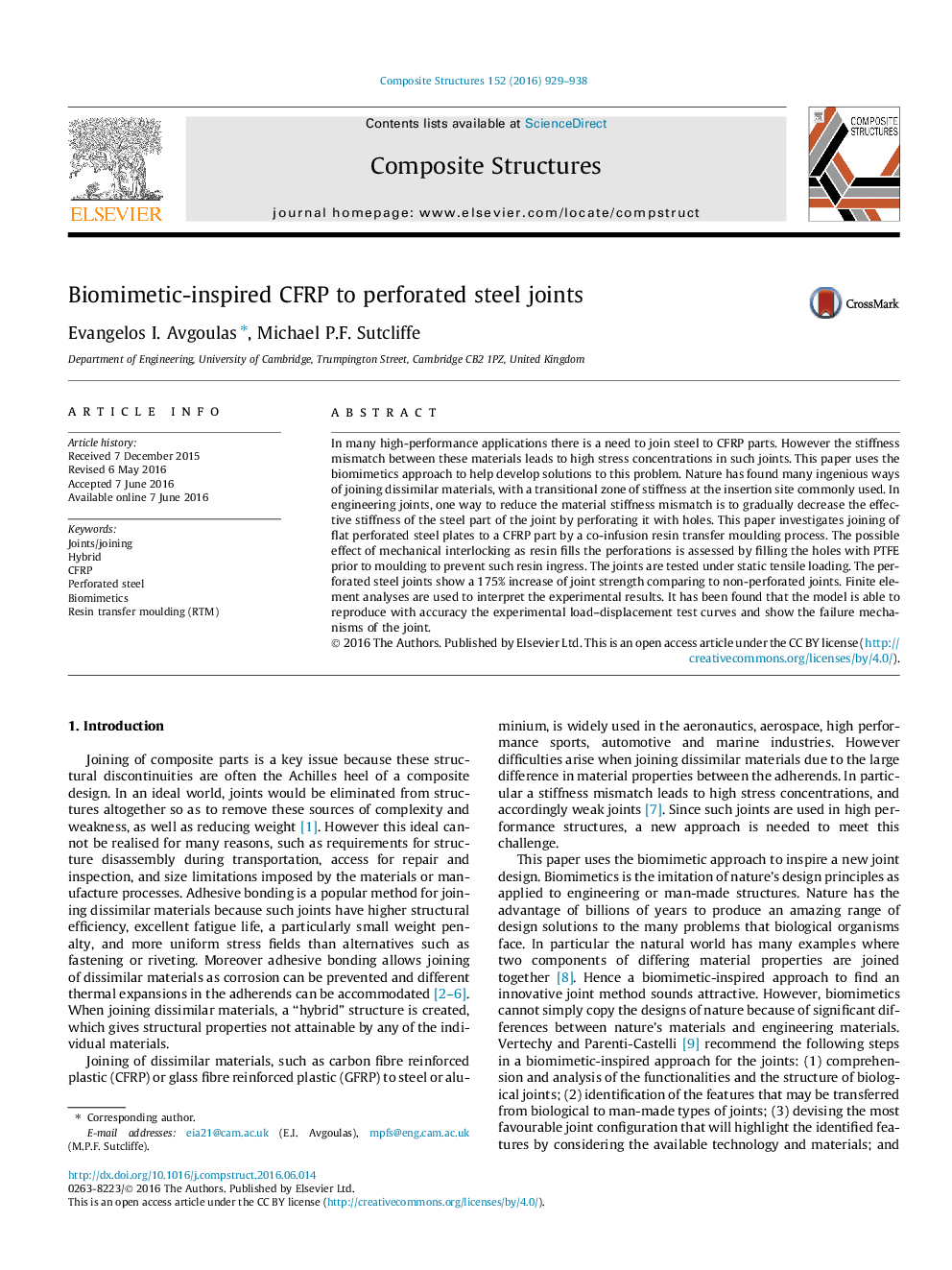| Article ID | Journal | Published Year | Pages | File Type |
|---|---|---|---|---|
| 6705508 | Composite Structures | 2016 | 10 Pages |
Abstract
In many high-performance applications there is a need to join steel to CFRP parts. However the stiffness mismatch between these materials leads to high stress concentrations in such joints. This paper uses the biomimetics approach to help develop solutions to this problem. Nature has found many ingenious ways of joining dissimilar materials, with a transitional zone of stiffness at the insertion site commonly used. In engineering joints, one way to reduce the material stiffness mismatch is to gradually decrease the effective stiffness of the steel part of the joint by perforating it with holes. This paper investigates joining of flat perforated steel plates to a CFRP part by a co-infusion resin transfer moulding process. The possible effect of mechanical interlocking as resin fills the perforations is assessed by filling the holes with PTFE prior to moulding to prevent such resin ingress. The joints are tested under static tensile loading. The perforated steel joints show a 175% increase of joint strength comparing to non-perforated joints. Finite element analyses are used to interpret the experimental results. It has been found that the model is able to reproduce with accuracy the experimental load-displacement test curves and show the failure mechanisms of the joint.
Related Topics
Physical Sciences and Engineering
Engineering
Civil and Structural Engineering
Authors
Evangelos I. Avgoulas, Michael P.F. Sutcliffe,
